Gupta: Cell phones, brain tumors and a wired earpiece -- CNN
On May 20, CNN posted the above video with an accompanying article where Dr. Sanjay Gupta talks about cell phones and brain cancer. Besides being CNN's chief medical correspondent, Dr. Gupta is an assistant professor of neurosurgery at Emory University School of Medicine and associate chief of the neurosurgery service at Grady Memorial Hospital in Atlanta, Georgia. In 2009, it was widely reported that he was offered the post of Surgeon General in the Obama Administration but turned it down.
In the face of repeated alarmist claim that cell phone use causes brain cancer, CTIA and the cellular industry responds with stonewalling that this is no proof and that cell phones meet all government standards - both literally true. Critics though focus on brain cancer although occasionally mentioning a large laundry list of other pathologies - all without any credible evidence. Why the focus on brain cancer as a possible impact of cell phone use? Probably scare tactics from the anticellular forces since brain cancer is one of the scariest diagnoses around and it thus helps grab headlines. Other possible pathologies just don’t get the same headlines.
Faced with this emotion loaded but evidence lacking threat, CTIA responds with legal stonewalling which industry sources says is focused on minimizing industry liability if same adverse health effect of cell phone use is ever proven. That may be a reasonable lawyer-driven response for industry in such a situation, but is it a reasonable approach for a regulator acting in “the public interest”?
While RF exposure to your head may not be doing you any harm, it certainly isn’t doing you any good. Thus while CTIA would prefer that the public just be given reassurances that everything is OK, presumably because “people trust government”. Well, the papers I read seem to indicate that many Americans do not trust government and FCC’s stonewalling on RF safety probably isn’t helping.
A better approach would be for FCC to clearly state that the best evidence shows the current standards are adequate but that individuals can take certain steps to decrease their exposure such as
- using Bluetooth-like earpieces,
- using phone preferentially in locations with stronger base station signal/“more bars”, and
- considering phone with lower SAR values. (Note this last issue is the one that FCC secretly flip-flopped on last year and has never publicly explained.)
The cellular industry’s long term legal liability should not be an issue here. If cell phones are really safe, then it doesn’t matter how any new public information acknowledges possible risk. Yes, such a public information change might impact the industry’s liability if a cause and effect relationship is ever proven, but in that case wouldn’t voluntary lower public exposure have been a government positive action?
So, CTIA feel free to play your silly games with San Francisco on public knowledge of SAR data, but FCC should decide that in the face of uncertainty the “public interest” is not necessarily defense of CTIA and its membership but in protecting the public.
Visit to Sendai
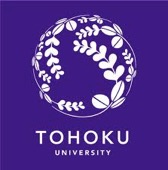
Downtown Sendai is far enough from the coast that there was no tsunami damage and earthquake damage is not very visible. However, an unusually high fraction of the buildings have scaffolding on them to repair loose bricks and tiles on the exteriors. On the train from Tokyo there was little damage clearly visible, but the bullet train track is also away from the coastal areas. Because of trackbed damage the bullet train in this area is now slower than usual, adding about 20 minutes to the approximately 2 hour trip.
I brought with me an offer from Virginia Tech to host students and faculty whose wireless research is on hold due to campus damage at Tohokudai. It is not clear if there is a good match here for specific research, but I am proud to start a dialogue on US help for the prominent university in Japan.
New GAO Report on NTIA & Federal Spectrum Management
Here is GAO’s summary of what they found:
NTIA is responsible for governmentwide federal spectrum management, but its efforts in this area have been limited. In 2003, the President directed NTIA to develop plans identifying federal and national (both federal and nonfederal) spectrum needs, and in 2008, NTIA issued the federal plan. GAO found this plan has several limitations, does not identify governmentwide spectrum needs, and does not contain key elements and best practices of strategic planning. NTIA has yet to issue the national plan. Furthermore, NTIA’s primary spectrum management operations do not focus on governmentwide needs. Instead NTIA depends on agency self-evaluation of spectrum needs and focuses on interference mitigation, with limited emphasis on holistic spectrum management. Lacking a strategic vision, NTIA cannot ensure that spectrum is being used efficiently by federal agencies. Additionally, NTIA’s data management system is antiquated and lacks internal controls to ensure the accuracy of agency-reported data, making it unclear if decisions about federal spectrum use are based on reliable data. NTIA is developing a new data management system, but full implementation of the system is years away.
Federal agencies use spectrum for many purposes such as emergency communications and national defense, and NTIA requires the agencies to periodically evaluate their current and future spectrum needs. Agencies are supposed to ensure spectrum assignments fulfill established mission needs; however, NTIA does not have specific requirements for agencies to justify their spectrum assignments or validate data used for these evaluations. Consequently, NTIA has limited assurance that the data used to make spectrum management decisions are accurate. Federal agencies rely heavily on their program offices to obtain data for the required evaluations and often face challenges, such as resource constraints and staff turnover, when coordinating with field program staff. Given that validating spectrum assignments could require significant agency resources, it would be beneficial for NTIA to consider options for a different approach to obtain and validate critical spectrum assignment information from the agencies, such as requiring agencies to conduct site surveys or attest to the accuracy of data they submit.
In response to recent initiatives, NTIA has taken steps to identify spectrum that could be made available for broadband use. First, NTIA evaluated various spectrum bands and identified 115 megahertz of spectrum that could be made available for broadband within the next 5 years based on criteria it developed. Second, NTIA developed an initial plan and timetable for evaluating and repurposing additional spectrum for broadband use in 10 years. Affected federal agencies—that is, those agencies operating devices in the spectrum bands being evaluated—encountered difficulties providing NTIA with the necessary data and analyses during the most recent evaluation. For example, according to the affected agencies, they were required to analyze and submit a significant amount of detailed impact analyses that were not readily available. Agencies will likely continue to face challenges providing such analyses to NTIA in the future as NTIA begins evaluating a larger number of spectrum bands for possible broadband use in the next 10 years.
The basic problem is the first few words above - “NTIA is responsible for governmentwide federal spectrum management”. This is not reality under our current system. The Carter era approach of making NTIA give orders to much larger Executive Branch agencies about how to spend their own money and manage their own systems is just unrealistic in the Federal Government. In January, I quoted an FAA Federal Register document that stated that federal spectrum management is “an existing process involving several Federal agencies with an interest in spectrum use, which NTIA oversees under the Department of Commerce.” This is the reality of the present system. I believe that it will only change for the better when key players realize that the present charter of NTIA is unrealistic and move much of the President’s 47 USC 305 power back to the White House. Most of the NTIA staff can stay in Commerce as the “IRAC Secretariat” - which is what they really do. The key decision makers should be back in the White House where they were until 1978. In this case, oddly, Nixon got the organization right and Carter messed it up with well intentioned but ineffective change.
Why We Can Have Both Reliable GPS and More Broadband


From The Hill’s Congress Blog, a post by your blogger that was published today:
A major radio spectrum problem before the Federal Communications Commission this year is the dispute between the GPS community and a company called LightSquared, which seeks to operate a new mobile broadband service using terrestrial base stations that will compete with existing cellular carriers.
Depending on your viewpoint, this dispute is either an attempt by greedy entrepreneurs to wreck the ubiquitous GPS system, endangering public safety or a spectrum fight between users of neighboring bands in which one group wants to solve a technical problem by putting all the burdens of the solution on the other.
Radio spectrum is a key resource in today’s information-based society, and it is in everyone’s interest to make reasonable attempts to squeeze the maximum use out of every Hertz of spectrum. The long-standing principle of U.S. spectrum management is that the FCC should make decisions in the “public interest,” although established users of spectrum have more rights of protection than new entrants.
Unfortunately, in many spectrum struggles over the past few years, incumbent spectrum users with receivers vulnerable to interference from adjacent or nearby band use have insisted on blocking new spectrum use – even when current technology would allow a transition to upgraded receivers with adequate protection. A truism among spectrum managers is “transmitters don’t use spectrum, receivers do.”
Receiver limitations – often a simple case of outdated technology – are a major cause of spectrum lying fallow.
For example, UHF TV stations in Washington were assigned channels 14, 20, 26, 32, etc., based on concern that TV sets would suffer interference if more were used. While that was true for 1950s TV sets, it was not applicable for the technology of the past two decades. Eventually, the FCC broke the outdated mold as part of the DTV transition with no problems using available new technology.
The same could be true for the GPS-LightSquared dispute. The FCC first allowed terrestrial use of the band just below GPS, best known as the home of the financially ill-fated Iridium satellite phones, in 2003. In 2004 it authorized LightSquared’s predecessor to use this band for cell phone service, with the limitation that consumer units had to have both bulky Iridium-like circuitry and cell phone circuitry.
The dispute erupted this January, after the FCC relaxed the restriction and dropped the Iridium-like requirement, since users in urban areas would never need it. The GPS industry, supported by DOT and the Air Force, cried foul – arguing that unspecified testing was needed before FCC could make such an authorization (although a careful reading for the FCC order shows that definitive testing is necessary before any practical use of the frequency).
Tellingly, the GPS industry and their supporters were silent on what they have done to improve receiver robustness since 2003, when they were told that terrestrial use of the neighboring band was authorized.
Are they using the best filter technology currently in production for comparable products such as cell phones? Do they think it is reasonable to expect that any GPS product ever sold has to be protected forever from any action FCC might take to make the nation’s spectrum resource more efficiently used?
Apparently the general aviation Aircraft Owners and Pilots Association (AOPA) does. For almost two decades now they have blocked FAA action to bring general aviation receivers used in instrument landings into compliance with minimum international standards for immunity to adjacent band FM broadcasters. AOPA feels the burden of any interference problem should be entirely on the neighboring band, so as to allow their members to use outdated receivers indefinitely. The GPS community is following the same pattern here.
A more reasonable solution can be found. On one hand, tight initial restrictions on LightSquared in terms of antenna design and siting would prevent interference to all aviation use and keep terrestrial impact minimal while phasing in more reasonable limits as the GPS receiver population improves. Conversely, the GPS community has to commit to being a responsible member of the spectrum-using community by employing reasonably available technology to decrease their vulnerability to other types of users.
The radio spectrum is a precious national resource. It must be handled carefully to maximize its utility for both the economy and national defense. That means adapting existing uses as new needs arise and as new technology becomes available. The present stonewalling by the GPS community on their neighbor LightSquared reflects poorly on a community with a proud history of great technical ingenuity that has helped change many aspects of our lives.
Earthquakes & Telecom: Role of Fiber Optics in Seismically Active Areas

When I finished graduate school “way back when”, I served almost 3 1/2 years in the Air Force working on underground nuclear test detection research projects. Now even in those days there were few underground nuclear tests, so when you try to detect them you really detect a lot of earthquakes - at least 20 a day greater than magnitude 4. So my Vietnam-era military service had the odd byproduct of learning about earthquakes before I got heavily involved in wireless communication technology.
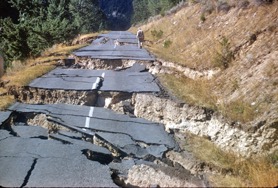
We know we have to design telecom systems so they don’t have “common point failures” - a single system that brings down multiple apparently independent systems if it fails. Over reliance on fiber optics in seismically active regions, e.g. California, could result in major connectivity problems after “the big one” if many independent fiber routes are damaged by ground shifts.
With today’s technology, fiber is often the economically preferred medium for long haul connectivity due to its low marginal cost for bandwidth capacity. (Fiber actually has quite a high fixed cost for the initial installation in most cases due to installation issues - the fiber itself is rather inexpensive.) Fiber is also used for some neighborhood connectivity, e.g. Verizon FiOS, but damage to such systems would have less of an impact than damage to intercity connectivity or cellular backhaul.
In the 1960s intercity microwave was the preferred medium for long haul connectivity and DoD was concerned about the impact of nuclear war on this network. Thus the Executive Branch pushed FCC and the then monopolist AT&T to diversify the transmission technology base with buried coax cable systems designed to survive nuclear blast. Traces of this can be seen today in AT&T cable warning signs along Route 7 in Virginia outside the Beltway and an underground switching enter in Leesburg. In the monopoly era it was possible to do this modification of the network without explicit Commission action by just “leaning on” AT&T and getting FCC to agree not to question the extra costs in AT&T Section 214 certifications - in effect charging the marginal cost to monopoly rate base payers. But in today’s competitive era that is not feasible. (In the 1980s as competition grew, DoD used explicit funding to pay AT&T and its competitors to make other network modifications that were in the national interest. The specific details were never made public.)
Your blogger urges the Commission and industry to review the scope of fiber optic use in seismically active regions for both cellular backhaul and intercity connectivity and consider what combination of microwave and fiber is best for such situations. A more difficult issue would be how to pay for such mixes in a competitive industry if they cost more than the current mix. There are several possible policy options, some of which might require new legislation. But if we found ways to “fine tune” the telecom network structure for national security purposes during the Cold War - both before and after competition - we can find ways today also.
In Japan, long accustomed to seismicity and resulting damage, the use of microwaves for emergency communications is well established. The picture at the top of this blog is of a microwave tower in Sendai - of all places! (Google Earth shows the tower survived the quake.) Below are two photos that show the role of such microwaves in Japan for emergency communications. At left is the top of Tokyo City Hall showing how microwave antennas were carefully integrated into the building design. At right is the building of the Ministry of Internal Affairs and Communications (MIC) the parent agency of Japan’s FCC counterpart. (MIC also has many of OMB’s nonbudget functions and many of GSA’s functions so it is a key agency in the Japanese government.)
I hope FCC asks MIC about damage to fiber optics systems in Japan during the recent disaster and about the mix of microwave and fiber communications routes in Japan’s telecom network.
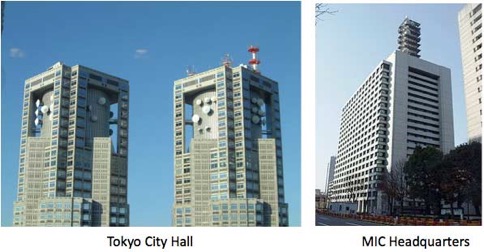
Can Cognitive Radio Technology Help Solve Some Difficult Spectrum Management Issues by Creating "Virtual Guardbands"?

The hidden node problem refers to the problem of protecting receivers from interference in a cognitive radio system when you can’t explicitly detect the receiver’s presence. This is the crux of the TV whitespace problem since TV receivers can not announce their presence. (In that case the use of cognitive radio detectors 20+ dB more sensitive than TV receivers can be used to solve the problem although FCC chose the more conservative approach of geolocation for initial implementation.)
The instant article considers the case of a full duplex mobile transmitter with known frequency offset, as in the case of the ubiquitous cellphone. It points out that in this case the hidden node is no longer “hidden” since it can be readily detected at short distances by the uplink signal and that the receiver frequency can also be calculated by adding the offset to the detected uplink frequency.
This is a special case of Preston Marshall’s general observation that while cognitive radios are best known for finding empty spectrum that can be used without cochannel interference, if you know the location and characteristics of nearby receivers you can also select frequencies that will not result in interference from adjacent channel or intermodulation mechanisms in receivers with limited rejection capability. Pres points out that receiver ejection capability is generally expensive because it requires on precise analog components, whereas cognitive radio technology is mostly digital with little marginal cost in the long run.
In the AWS-3 proceeding, T-Mobile, the adjacent channel licensee in most places, claimed that adjacent channel interference to their FDD downlink was inevitable if the adjacent AWS-3 were used for either uplinks or TDD. Since we now know that T-Mobile was “on the auction block” during this deliberation, they had every incentive to maximize their sale value by using a massive legal effort for both trying to stop a new entrant and removing any risk of interference from concerns of potential purchasers. One of the parties in the AWS-3 proceeding mentioned a variant of virtual guardbands in comments, but this was promptly dismissed by the cellular mainstream as speculative.
But while there might be some slight question of how well TV whitespace devices can detect a TV signal from 50 miles away that provides marginal reception to TV sets using antennas near the devices, detecting a cellphone uplink signal nearby - the only place where adjacent channel or intermodulation interference is a threat - is trivial by comparison.
Industry loves to demand guardbands: it is a proven technology to prevent interference and also limits competition. But guardbands also have a real cost in our spectrum dependent economy that is always searching for more spectrum. Virtual guardbands can be a realistic way to use today’s technology to avoid interference while allowing more intense spectrum use at the boundaries of FDD bands.
FCC has never resolved the AWS-3 issue, they just told M2Z Networks that no answer was coming soon. AWS-3 continues to lie fallow as we beat the bushes to find the 500 MHz of new spectrum demanded by the National Broadband Plan. - there are no easy answers. Maybe with technologies such as virtual guardbands we can put AWS-3 to use serving society and the economy. With AT&T and T-Mobile now before the Commission begging for permission to merge, maybe they can more more flexible on the AWS-3 issue as a merger condition.
Chmn. Fowler and the "Birther" Issue
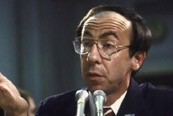
Now the Constitution’s Article II, Section 1 requirement for a “natural born Citizen” only applies to the presidency, not the FCC chairmanship. Repeatedly during his chairmanship, Chmn. Fowler publicly stated that his parents were Americans temporarily residing in Canada at the time of his birth and that he was eligible to be president under the terms of Article II, Section 1. It appears that there is no case law that has clearly stated what it means to be a “natural born Citizen” in the context of Article II, Section 1. Indeed, legal quirks at the time of Sen. McCain’s birth raise issues about his qualifications also.
But at least during the Reagan Era there was a view in certain Republican circles that even the location of birth was not critical if one was a citizen from birth due to one’s parent or parents.
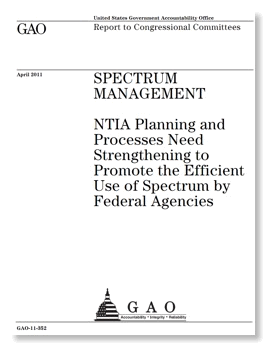



![Validate my RSS feed [Valid RSS]](valid-rss-rogers.png)

